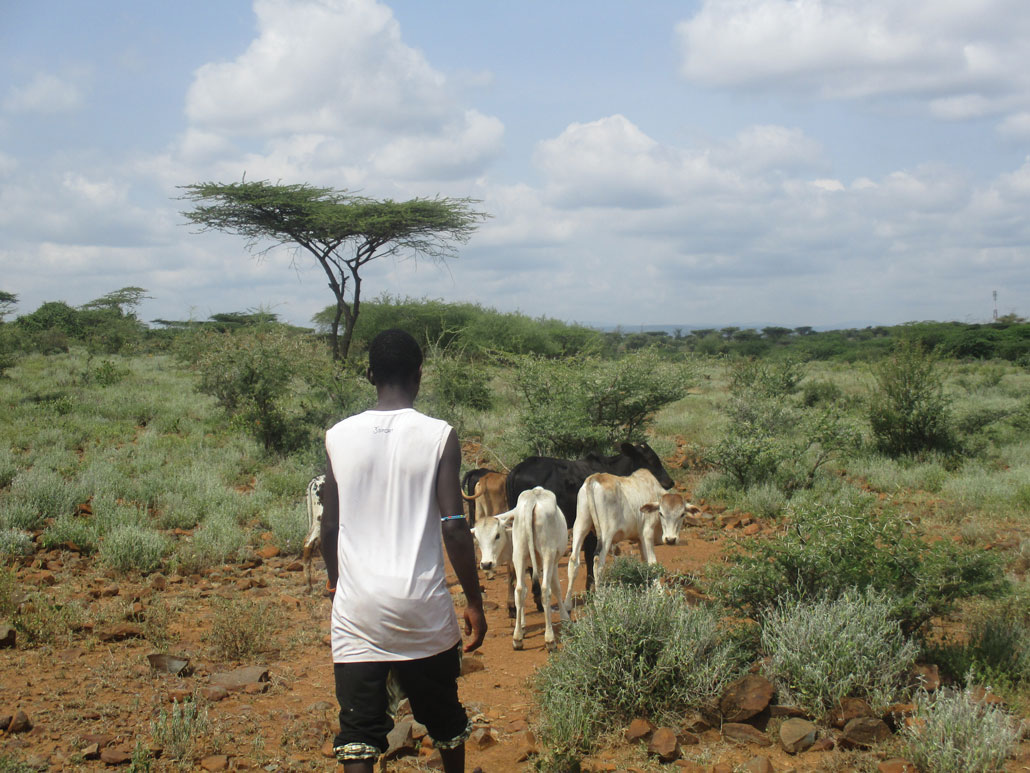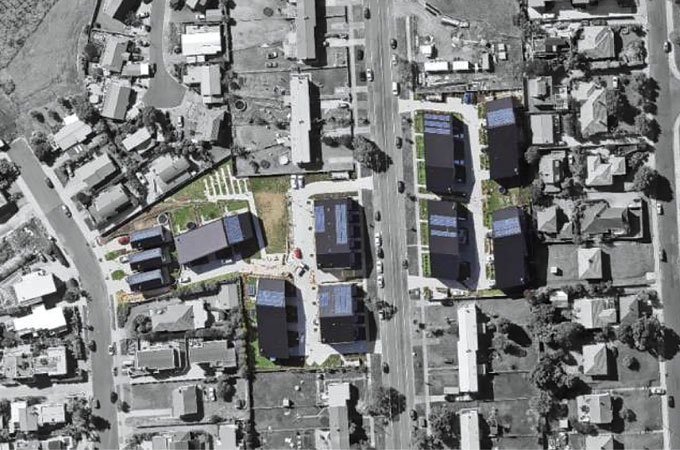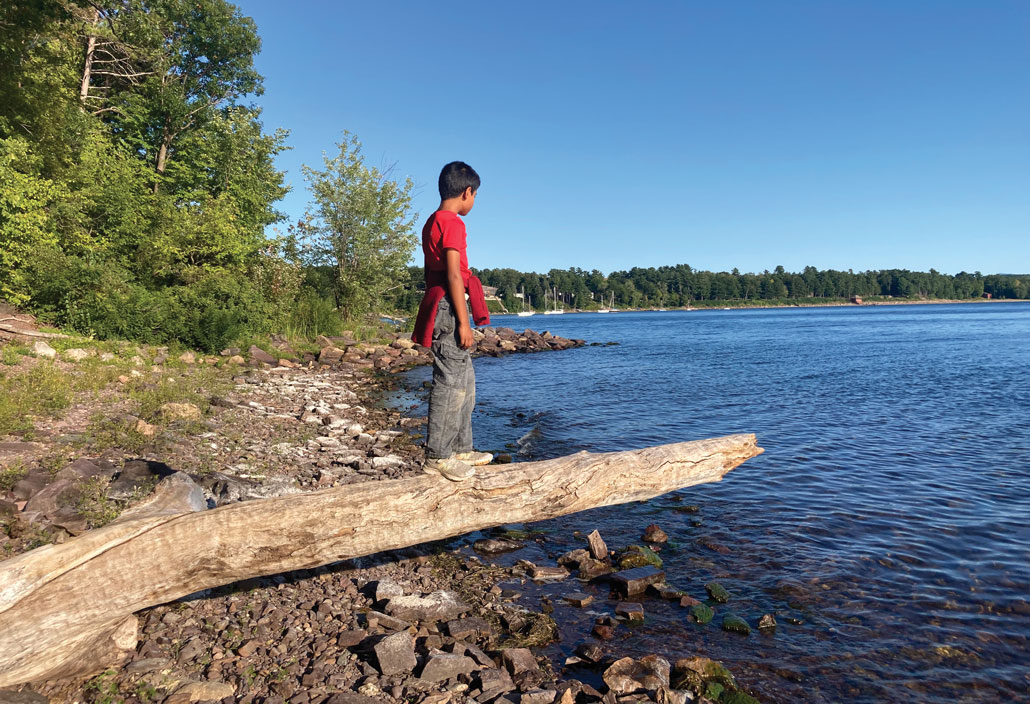Why Scientists Are Expanding The Definition Of Loneliness
For centuries, Turkana herders in northern Kenya followed water. In the past, families moved about 15 times a year in search of watering places for their cows, donkeys, camels, goats and sheep.
However, in recent decades, the seasonal lifestyle of the Turkana people has become unsustainable. Due to ongoing drought and fighting in the region, many women and children stay put, while men often take the risk themselves. The violence has forced many families to flee for their lives at any moment. Separated from their livestock, these families live on the outskirts of the city or spend time in displacement camps surrounded by thick woven fences.
Even friendships built through the cattle trade are crumbling. "How can we help each other when no one has animals?" a Turkana woman asked during an interview with Ivy Pike, an anthropologist who has been working in the region for 25 years.
The suffering in these communities is great, says Pike of the University of Arizona in Tucson. Unable to safely navigate the landscape for medicinal plants such as herbs to stop postpartum hemorrhage in children or control fever, women find it difficult to fulfill their roles as caregivers. Meanwhile, male identity is often so tied to cattle ownership that the Turkana have a word for a man without animals: ekebotonit .
"Loneliness due to lack of animals is a particular concern that goes beyond the food and nutrition provided by livestock," Pike and a colleague wrote in 2020 in the journal Transcultural Psychiatry . " Ekebotonite ... not only loses the sense of purpose and friendship that the herd offers, but also hides according to the Turkan: a person without a voice in society."

This experience of loneliness by many Turkana suggests that this feeling defies easy characterization: it is more than just a lack of social connection. This complexity is evident in all world cultures. For example, in a study conducted during the COVID-19 pandemic in the United States, many respondents attributed their loneliness to various factors that made them feel disconnected from reality. Michelle Parsons, an anthropologist at Northern Arizona University in Flagstaff, reported in the journal SSM-Mental Health that in 2022, a woman missed a trip to the supermarket. Another woman wanted to browse the stacks of books in the library, usually a solitary task.
There is a growing push in the social sciences to expand the definition of loneliness to include feelings of detachment from animals, places, customs, rituals, and even time. For example, in October 2020, Parsons co-authored the introduction to a special issue on the anthropology of loneliness in cross-cultural psychiatry .
Understanding the components of loneliness (and its flip side, belonging) is not just an academic exercise; Studies show that this is a public health problem. In a May update, US Surgeon General Vivek Murthy declared loneliness a public health epidemic, citing the results of multiple studies: Loneliness increases a person's risk of heart disease by 29% and stroke by 32% . In older people, chronic loneliness is associated with a 50% increased risk of developing dementia. Social isolation can increase the risk of premature death by 29%.
Parsons says broadening the definition of loneliness could help expand the range of possible interventions.
Sarah Wright, a geographer at Newcastle University in Callaghan, Australia, says connecting people to the rest of the world can help them understand and address climate change. According to him, this process begins "not with people, but with building intentional relationships."
Ancient forms of belonging
To understand belonging and the resulting loneliness, Wright turned to local communities. Although these communities span the globe and include different practices and languages, they generally believe that prosperity comes from harmony between people and the planet ( SN: 09/23/23, p. 14 ).
Wright and his colleagues recently studied the stories told by the Yolu Aboriginal people through ritual songs known as singing spirals. This ancient practice explores the connections between place, culture, people and the stories they tell. Wright's team, made up of members of the Yolu community and based on the work of the Gaiwu girls' group, published an analysis of a matriarch's song spiral in 2022 in the journal Qualitative Inquiry . According to the way of worldview, the main author is called Bawaka, the homeland of the tribe in the north of Australia.
Lying on her deathbed, the matriarch began to read her place, her sense of belonging in a vast network of human and non-human relationships. In accordance with the tradition of her people, the matriarch believed that this final journey would take her to the sea; He imagined himself as a whale. "I see how the salt water carries me, moves with the current; it takes me to the depths of the ocean where my bloodline is based."
The authors explain that "Matriarch" is based on ancient writings from the silent land. This song always begins like this: "In the beginning someone had to speak the word of the earth, it was silent, into nothingness. And then it all started with a voice from the depths of the water: "Hmmm hmmmm." That was the starting point…”
From this point on, the matriarch's song moves from generation to generation, anchoring people in a larger time frame, Wright says. The matriarch sings about swimming with her dead grandmother; reads his daughters, grandchildren, great-grandchildren.
The song also connects the Yolu people to their homeland, speaking of whale migration patterns, prime fishing grounds, and physical connections on land and sea. The song "Spiral" "shows the land from the perspective of the sea," says Wright.
According to Wright, the song spiral of the matriarch shows that non-human relationships are as real to the Yolu people as human relationships. Through such connections, people experience a sense of belonging to the world. Without them, people feel lost.
As matriarch Merrkiyavui's daughter explains in the article, if the laws of balance between people and land or country change, “the spiral can fall and explode. This is what we say: it will break and float, and you will be like a leaf floating in the air and nothing will control you... if this spiral is broken, the songs will disappear too”.
Other research suggests that land loss, whether due to migration, development, climate change or some other cause, can manifest as loneliness in local communities. For example, in 1987, Teresa O'Nell, an anthropologist at the University of Oregon in Eugene, began an 18-month study of depression among the Salish and Pende d'Oreille people of the Flathead Reservation in Montana. But when O'Nell asked people if they ever felt depressed, they always talked about loneliness.
O'Nell said in a 2004 issue of the journal Culture, Medicine and Psychiatry : "I've asked over and over about 'depression' and I've been told over and over about 'loneliness' by drawings.
O'Nell attributed this loneliness to several causes, including a sense of isolation from society, an existential sense of separation between self and a higher power, and the loss of ritual and language. He observed that the Salish and Pend d'Oreille people saw their loneliness not as a pathology but as a natural response to the destruction of their way of life.
Joseph P. Gone, a psychologist at Harvard University and a member of the Aanih-Gros Ventre Tribal Nation in Montana, says: “Traditionally oriented Indians are less sensitive to grief and more prone to loneliness.
If land loss is associated with loneliness, especially in indigenous communities, this feeling can be expected to increase as climate change damages people's ancestral lands. ( SN: 28/03/20, p. 6 ). For example, the 2019-2020 fires in Australia, which burned millions of hectares, caused great suffering to Aboriginal communities; Australian researchers working with these communities wrote in 2020 for the non-profit news organization Conversation: "For Aboriginal people...living with the trauma of dispossession and abandonment, and now with the trauma of catastrophic fire, our pain is very different from of non-indigenous people".
Commitment to daily rituals
According to Wright, in industrialized cultures there is less emphasis on harmony between people and the planet. "The fact that you can have a rich relationship with a country is worthless."
But as the pandemic has shown, even in industrialized cultures, many people's sense of belonging depends more on their connection to the world than on the person. However, rather than relationships between people and the landscape, these relationships are between people and aspects of the environment.
According to Parsons, this need for engagement with the built environment is evident in the journal entries provided by the Pandemic Journal Project. This global initiative to collect people's experiences of the historic health crisis received nearly 22,000 applications from 1,750 people between May 2020 and January 2022.
"Loneliness overwhelms me. Seems out of left field. Wanting to go out and hang out with friends, go out to eat and even browse the library shelves,” wrote Denise, described as a divorced, black Midwestern woman in her 60s. her.
In a 2022 article in SSM-Mental Health , Parsons reported that typical tools used by psychologists to measure loneliness do not capture these feelings. He came to this conclusion after contacting 35 American magazine writers, many of them with multiple articles, who had used words containing "lonely" or "isolation" in at least one article. Journalists completed a five-statement questionnaire about loneliness at the same time as the first entry and every six weeks thereafter. Newspaper editors answered yes or no to statements such as: "I miss having people around me." "I have a lot of people I can rely on when I have a problem." "There are quite a few people I feel close to."
Although many respondents reported feeling lonely in their questionnaires, they still scored low on the Parsons Loneliness Survey. For example, on a day when Taylor, described as a single, non-binary white man in his 20s, wrote that he had "never felt more lonely," he scored 0 on a loneliness survey.
Parsons attributes this discrepancy to the limitations of the investigation. The psychological questionnaire used in the journal project, the De Jong-Gierveld Loneliness Scale, and another widely used questionnaire, the UCLA Loneliness Scale, define loneliness as a form of social pain caused by the feeling of missing a social network or things significant others. . The nation. ... relationships. .
Therefore, most research on loneliness ignores people's connections to places, activities, and even casual acquaintances. As part of the journal project, Parsons notes, people wrote about lost rituals and other experiences like birthday parties, holidays, church services and funerals, or lost places like gyms, grocery stores, libraries and friends' houses. . People also wrote about everyday missed encounters with other people, the seemingly mundane interactions that can happen as people wander through their countries.
This sense of loneliness is evident in one of Taylor's notes. They write: "I miss not only my friends, but also strangers." I miss random meetings with people on the street, in shops, in bars. "I miss hooking up with someone and then moving on."
Parsons says that De Jong-Gierveld's loneliness scale does a great job of capturing the desire for deep, meaningful relationships that people often associate with loneliness, but it overlooks other types of loneliness. "It's not gaining momentum at all. This is not about gaining experience."
Expanding the loneliness toolkit
Inclusion of the built environment in loneliness assessments is not yet common. But architects, whose profession is based on understanding how people move in their communities, often think intuitively about how the design of the physical environment can reinforce feelings of isolation or promote belonging.
The first line of Finnish architect Juhani Pallasmaa's chapter in his 2021 collection of essays and lectures reads: “We generally think of loneliness as the unique situational, social, or mental experience of being isolated from a place, a settlement, or people. others. . Soledad. and the built environment .
Many architects, including Pallasmaa, have been inspired by the work of the German philosopher Martin Heidegger, who believed that houses are both shelters and vehicles for expression. Architects thus create an environment that fills life with meaning.
Sociologists, along with architects, are beginning to think about how the built environment can affect loneliness. In his latest public health advice, Surgeon General Murthy outlined six key principles for developing social relationships. Under the first pillar, it is recommended to facilitate better urban planning and connection between people by providing easy access to green spaces and increasing the use of public transport.
Similarly, in January, an interdisciplinary team of researchers from Australia and England, whose areas of expertise include urban planning, public health and sociology, identified several features of urban design that have the potential to reduce loneliness. These characteristics include common areas, walking, public transport, housing design, sense of safety and access to natural spaces.
While these urban design projects often aim to bring people together, there is a growing awareness that connecting people to the natural world can also alleviate loneliness. "People can become socially isolated without feeling lonely," says Emily Rugel, an environmental epidemiologist at the University of Sydney. “They can discover the ability to move in and out of a biophilic relationship, observe wildlife and walk among the trees. [This is enough to make them feel connected to the rest of the world. "You don't necessarily need to contact friends or family to do this."
Take, for example, a small project in New Zealand that aims to reduce loneliness, specifically by helping people reconnect with their families and ancestral lands. Members of Ngāti Whātua Ōrākei, one of the Māori subtribes, built a 30-house papakainga , a type of Māori community cooperative, on ancestral land. Completed in 2016, the project brought people together by connecting homes with shared streets, community gardens and children's play areas.

The designers wanted people to feel as if they were walking the same path as their ancestors, the researchers write in the 2022 issue of the journal Wellbeing, Space and Society . They hoped that this humor would help the residents to feel part of their culture and for a long time. The authors point out that even when building on ancestral land is not possible, bringing together members of an often fragmented community has the potential to revive languages and cultural traditions. But more research is needed to see if returning to the Pope reduces loneliness.
The point is that expanding how we think about loneliness has the potential to expand the range of possible interventions, Parsons says. "We can fix our loneliness not necessarily by calling a friend, but by going outside, going for a walk, going to the library or sitting in a coffee shop."

Loneliness and climate change
Many years ago I moved to a small town in New England when I was a few months pregnant. I knew no one but my wife and I, and spent my lonely days wandering in the woods behind our house. But, after all, my brother was born to me, and finally he put on the enosk and went down to the steep embankment. So the waiter in the artwork was very good. My cases were forgotten and their volumes were very approximate. When I figured out how to play with the wire, I realized that others were working with LEDs, like glass, which is not very useful for my dinokestvo.
This was so and was included after the division of Saroit Rai or thought papers. On this occasion it would be appropriate to mention that the story has been told.. отн ошения с миром природы. I didn't see your observation with a good idea or answer for you. No, it was in this new place that I found myself. So they were forced to pay and got stuck in the process.
Look, they thought, what happened. In 2000, the philosopher and environmentalist Godov Glen Albrecht Sidneiskogo a term iversiteta pridumal "solastaltalgia" describing bol or nedo moganie, What is the story of the story Disasters destroy the house. Etymologically, this word appears from both comfort and idle comfort. As Albrecht wrote in 2007, "імеет значения, объявление с покинутостью в и одиночеством". Solastalgia is also a matter of nostalgia.

Refer to the term below. лас добыча полезных ископаемых. They emphasized the obespokoennost of all, as they are very useful. "In fact, the same thing happened in MIN, etc. After all, all I can do is change my mind and move the clock to the other side of Leo. The man's wife said to Eve, "When the clock breaks, your music song doesn't sit well, which happened." »
Here is the story of the story. These children have been destroyed by the colonizers who destroyed their parent nations. "To see colonialism is to see its end," said Pisal Albrecht. Other words: запустение, заброшенность and одиночество.
In the past, the gods used the following terms: ecotrevog and climate. тическое горе ( SN: 29.02.20, str. 22 ). But if we consider the basics, it is used by these networks. ideas with loneliness. I think. Now, in 2022, online professionals will have more than 3,000 200,000,000,000,000,000,000,000,000 people, all benefits listed. more cabbage.
These terms are not intended to be used as if they were not. These articles are very popular in this regard. We are more than happy to talk about it, so we can put it into practice. Don't worry because we live without these blood cells.
The sun has gone to my place in New England and the water is not so good and not so yes. These months are often associated with short exposure. What is it called, the most important thing is that they say "kamenist".
It was not necessary to start from the beginning and die, ч то бревно пропало. Items have not been used since they were used.






Tidak ada komentar untuk "Why Scientists Are Expanding The Definition Of Loneliness"
Posting Komentar